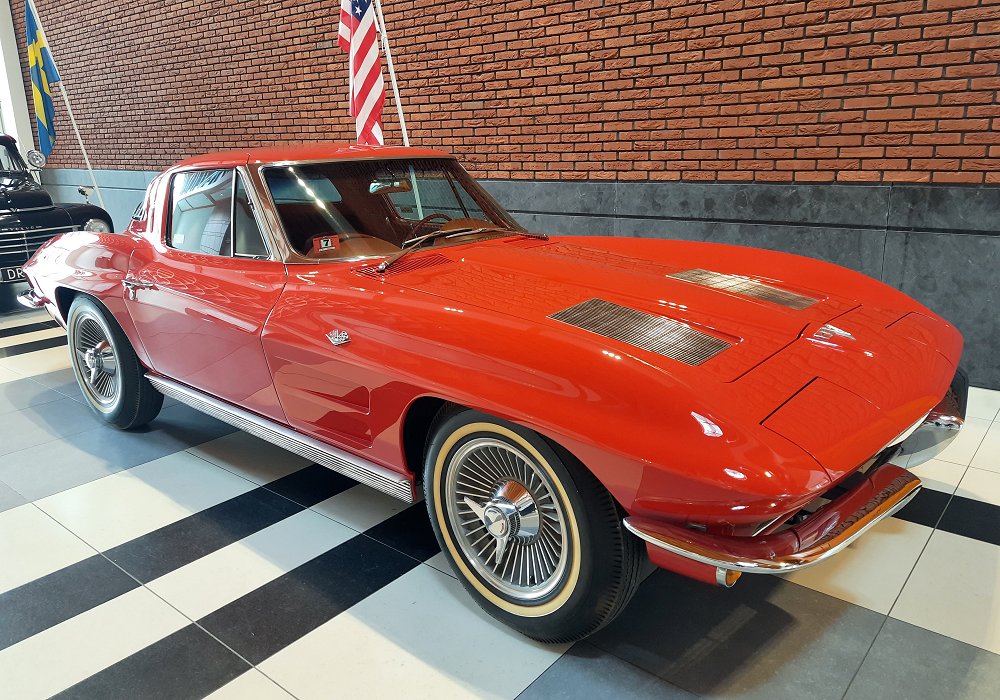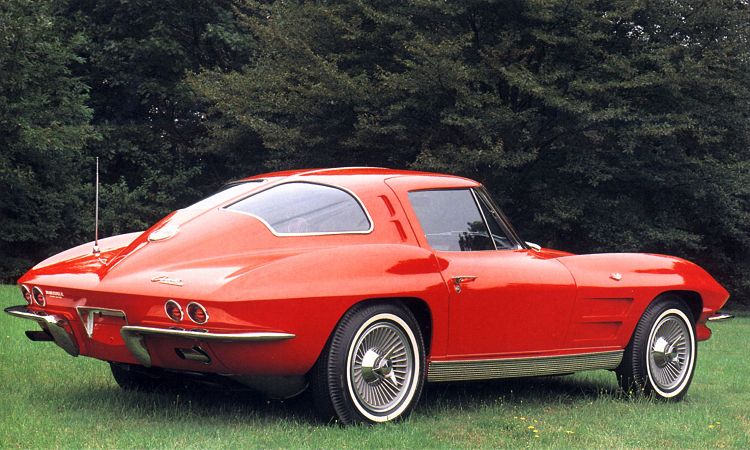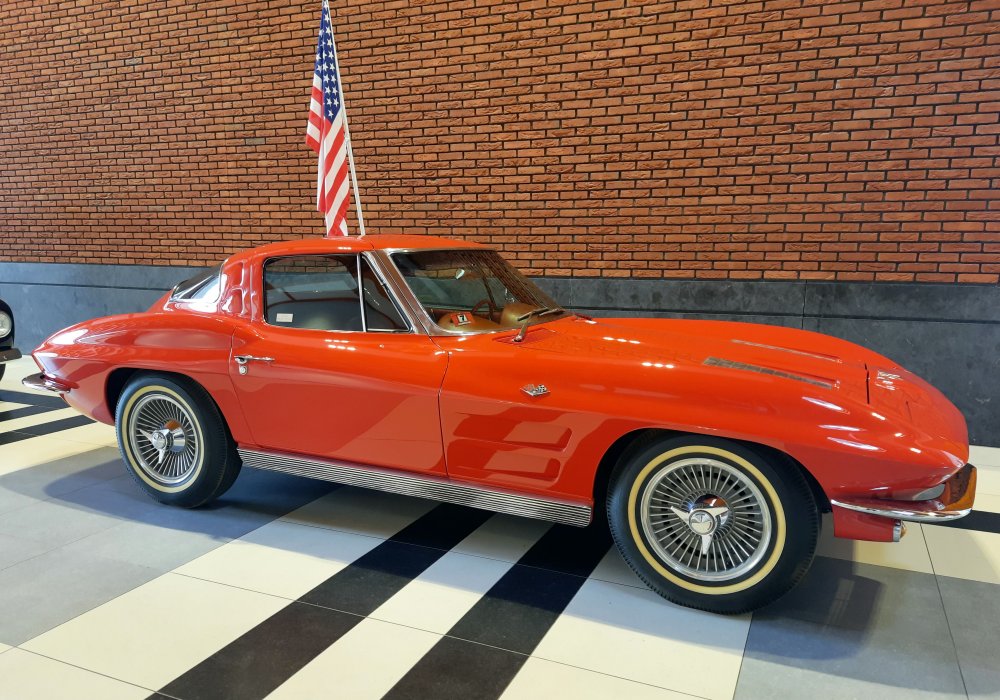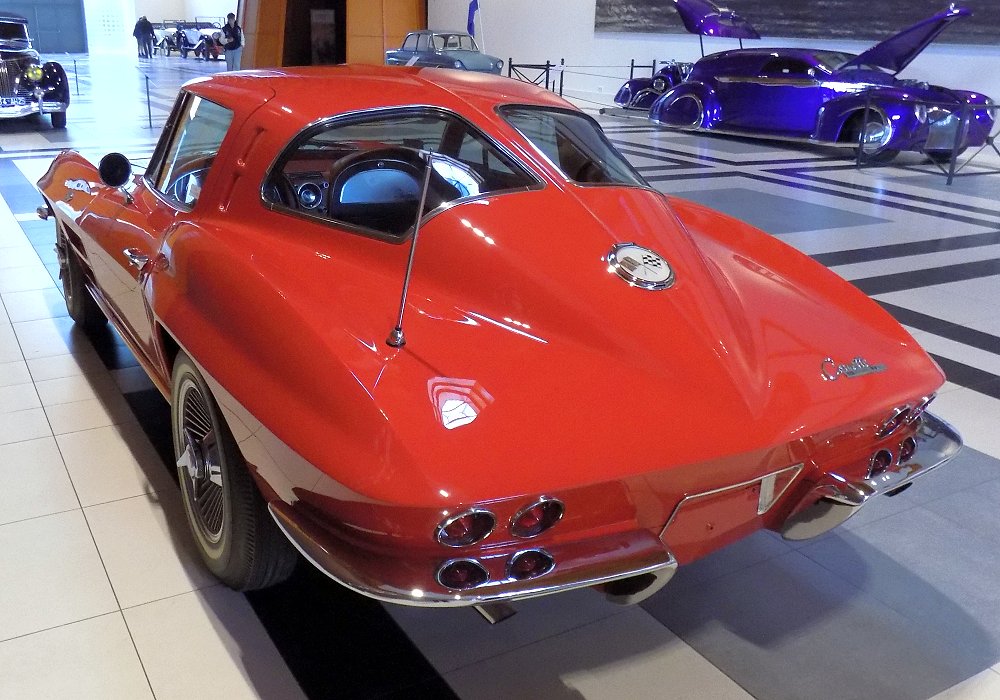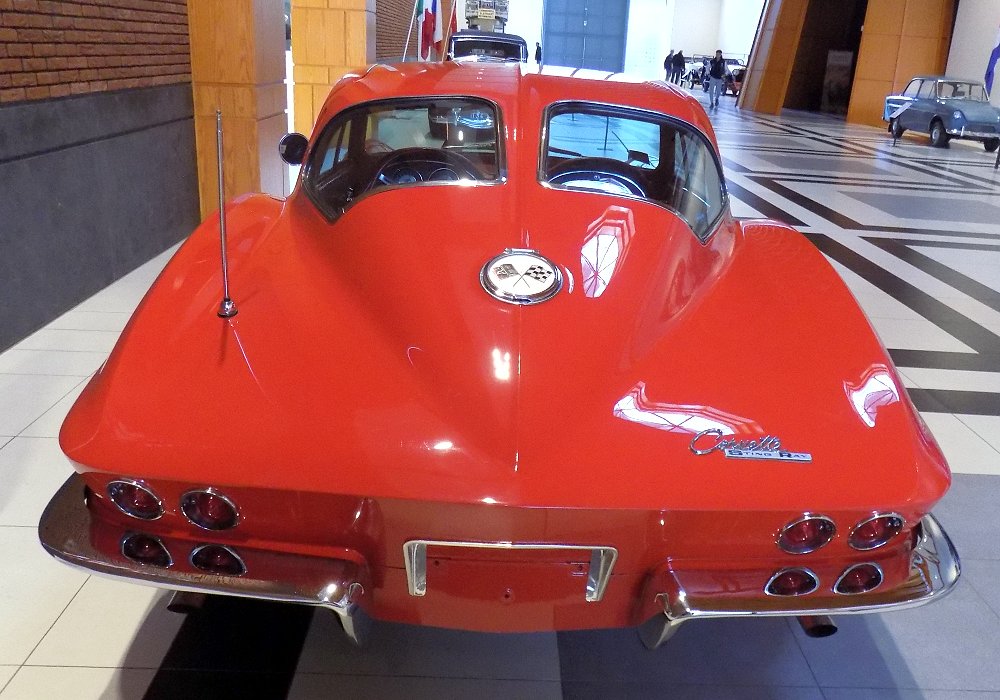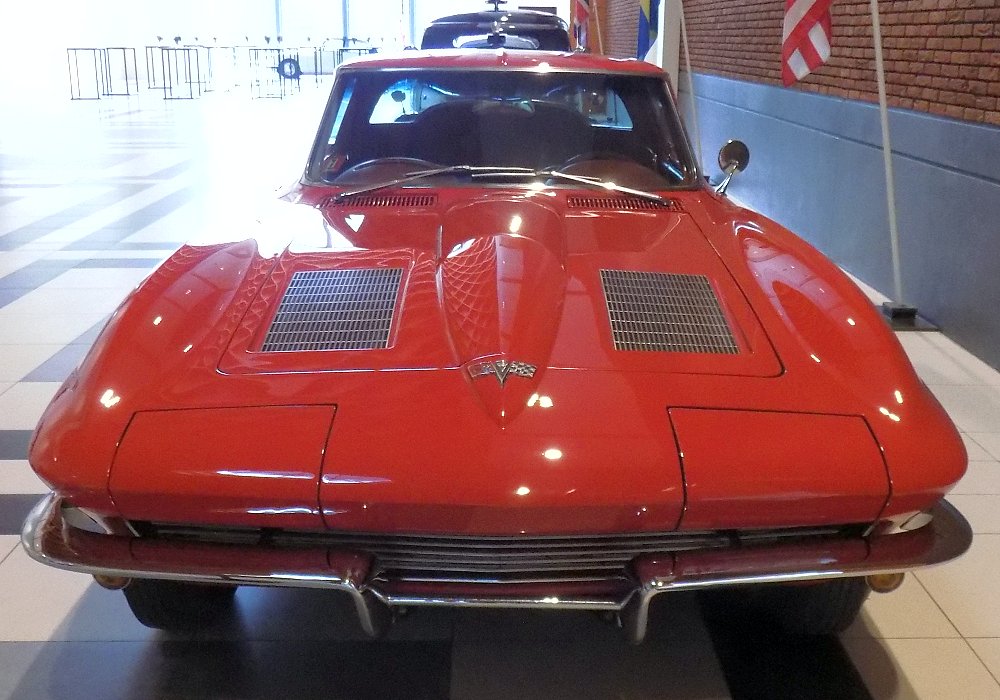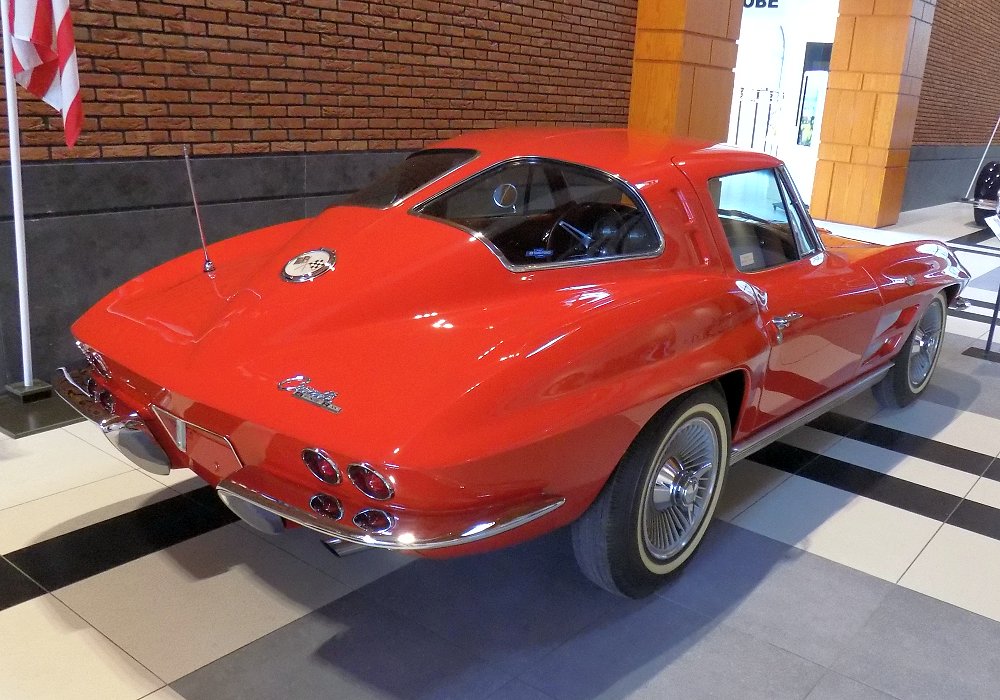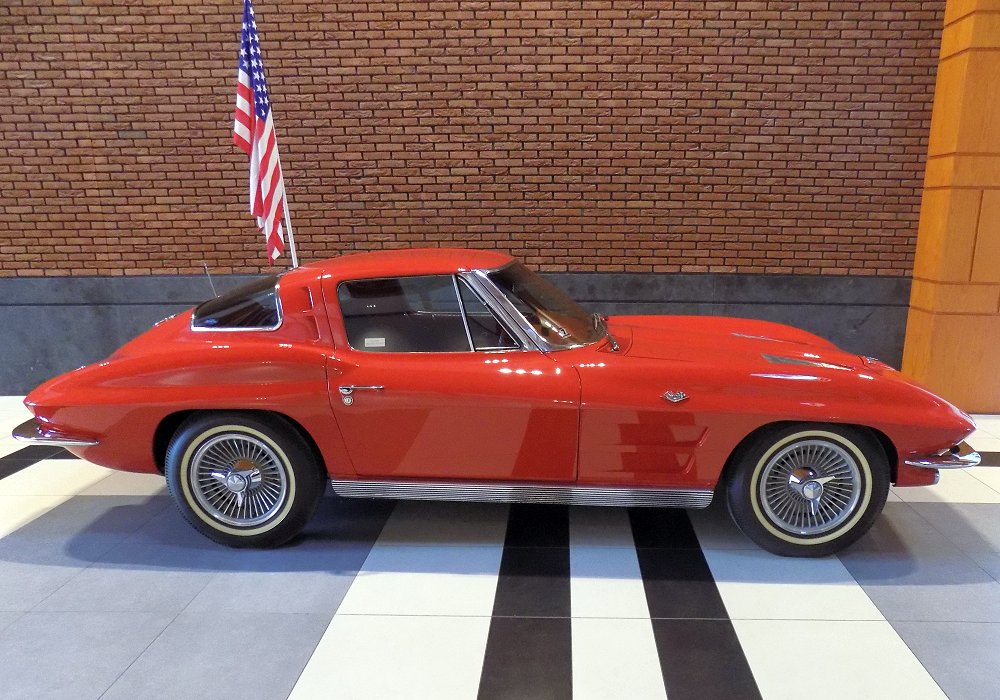Description
The 1963 Corvette Sting Ray “Split Window” occupies a special place in Corvette lore, and the version equipped with the 327 cubic-inch V8 rated at 250 horsepower was the entry-level performance model for that landmark year. Under the flared fenders and sculpted bodywork lay Chevrolet’s new small-block V8, fitted with a single four-barrel carburetor and a hydraulic-lifter cam. Though not the most powerful option that year, its smooth torque delivery and crisp throttle response made it a well-balanced choice for both cruising and spirited driving.
Visually, the 1963 Sting Ray split-window is instantly recognizable by its sharply divided rear glass, a design cue unique to that model year. The body featured hidden headlamps, a tapered beltline, and pronounced creases along the hood and deck lid, all of which contributed to a sleek, aerodynamic profile. At the front, a low nose with integrated grille and turn indicators gave it a purposeful stance, while the fastback rear with its distinctive split pane turned heads wherever it went.
Chassis and suspension upgrades were as important as the engine. Independent double-wishbone front suspension, transverse leaf spring rear setup, and four-wheel coil springs provided superior handling compared to previous Corvettes. Disc brakes up front were standard, offering improved stopping power to match the Sting Ray’s newfound agility. With a curb weight just over 3,000 pounds, the car felt nimble through corners and planted at speed.
Inside, the cockpit was driver-focused yet relatively comfortable for its era. Twin bucket seats, a leather-wrapped steering wheel, and a panoramic dash with full instrumentation provided both the tools and the ambiance for performance driving. Options such as a four-speed manual gearbox, radio, heater, and air conditioning allowed owners to tailor their cars toward track use or long-distance touring.
The 327/250 split-window Sting Ray represents the perfect balance of style, innovation, and everyday usability. Though more potent engine options were available—ranging up to the 360-horsepower fuel-injected version—this 250-horsepower model remains highly desirable for collectors. It encapsulates the moment when Corvette transformed from America’s sports car into an automotive icon, with a design and performance package that has endured in both legend and metal.
